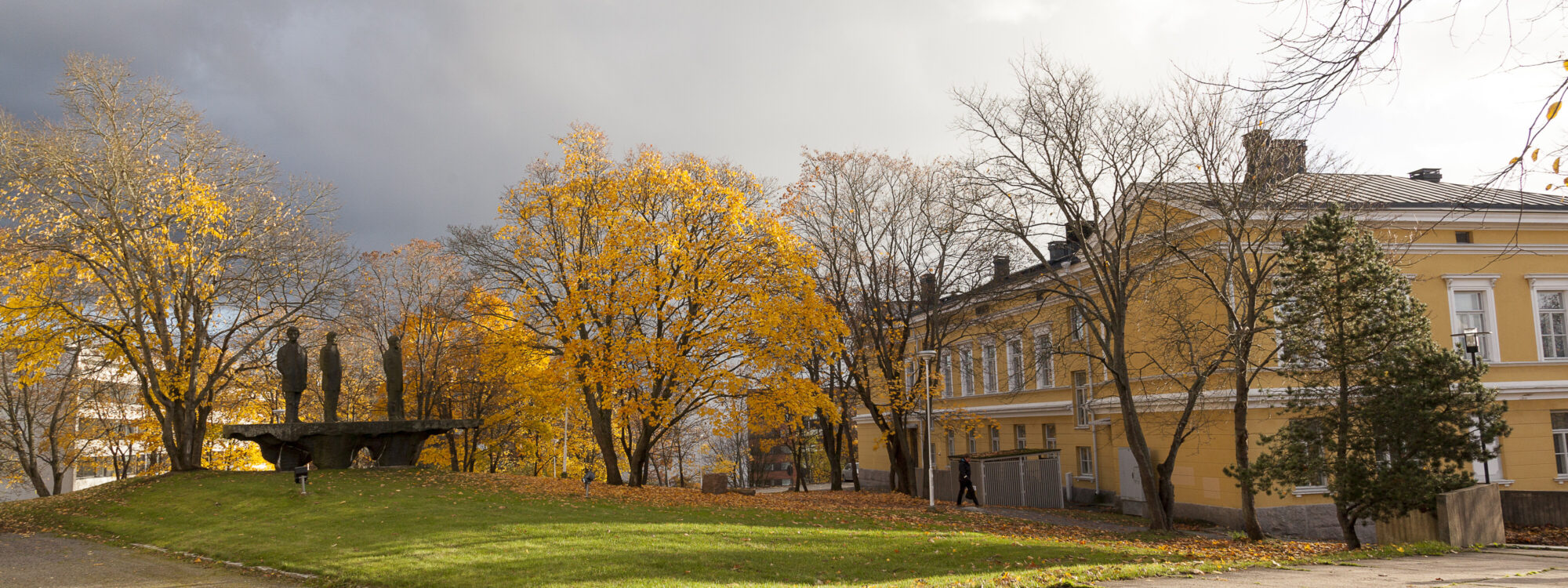Tapahtumat
KISUVIn vierailuluento torstaina 30.10.2025, klo 15-17
Arcanum, ARC A112
Tervetuloa KISUVI-hankkeen järjestämälle vierailuluennolle Writing processes: What happens when a text is born, and how may (AI) writing tools shape future writing processes? Luennon pitää prof. Victoria Johansson (Högskolan Kristianstad). Englanninkielinen luento on avoinna kaikille aiheesta kiinnostuneille.
Tilaisuuteen ilmoittautuminen on suljettu.
Luento järjestetään hybridinä ja Zoom-linkki lähetetään ilmoittautuneille. Tilaisuudessa on kahvitarjoilu.
Victoria Johansson on ruotsin opettamisen ja oppimisen professori ja yleisen kielitieteen dosentti. Hän on tutkimuksessaan keskittynyt kielen tuottamiseen ja kehitykseen sekä kirjoittamiseen.
Abstrakti
Writing processes: What happens when a text is born, and how may (AI) writing tools shape future writing processes?
Victoria Johansson, victoria.johansson@hkr.se
Professor in the Teaching and learning of Swedish, Kristianstad University, Sweden
What happens during writing? What processes do writers engage in concurrent with text production? Seminal cognitive theories on writing processes put forward three main processes that occur: 1. Planning: that is, determining the content, often in relation to a set task, and deciding on linguistic form, often in relation to a specified genre and audience, but also to the overall structure and organization of the content. 2. Translation: that is, the execution phase, or in other words, the process where thoughts are transferred to visible language on screen or paper. This involves motor aspects, such as keyboard proficiency, or handwriting fluency, but also aspects related to orthography and spelling. 3. Revision. This process encompasses aspects of evaluation, that is, assessing whether the text written so far meets the goal for the task. This may or may not involve reading one’s own text. The evaluation can result in changes in the text: deleting, adding or moving text. The processes occur iteratively throughout a writing session, and some scholars argue that they partly occur in parallel. How and when the writers make use of writing processes are dependent on a range of factors; to mention a few that are important: age (younger writers with less experience and education will employ different strategies than older, experienced writers), language proficiency (i.e. writing in L1 or L2 will lead to writers allocating their resources differently during writing), task (i.e. experience of a specific genre, topic or audience will influence how writers perform), and tool (writing by hand or writing on computer, or by other means, e.g., talk-to-text, will affect the processes).
Traditionally, much research on writing processes (especially in the school context) has been focused on students’ planning skills, including content generation and lexical retrieval, on students’ execution, especially orthography and grammar skills, and on students’ ability to identify errors or areas to improve during revision processes. But new, powerful and available generative AI (GAI) tools will transform our writing processes, and the skills that students need to develop. When GAI can present suggestions for content, text outline and vocabulary, providing advanced grammar and spellchecking, and detect and propose improvements to texts, this will impact writers’ evaluation skills. How well prepared are we as writers, and how do we prepare our students, for a future where GAI can be an essential tool for writing?
This presentation will include examples of writing processes from a range of writers with different backgrounds, and will challenge what we mean by “writing”. We will together discuss how new GAI tools may change our writing habits and our views on writing.
References
- Bereiter, C. and Scardamalia, M. (1987). The psychology of written composition. Lawrence Erlbaum Associates, Hillsdale, NJ.
- Berninger, V. W., Cartwright, A. C., Yates, C. M., Swanson, H. L., and Abbott, D. (1994). Developmental skills related to writing and reading acquisition in the intermediate grades. Reading and Writing: An interdisciplinary Journal, 6:161–196.
- Gärdenfors, M. & Johansson, V. (2023). “Written products and writing processes in Swedish deaf and hard of hearing children: An explorative study on the impact of linguistic background.” Frontiers in Psychology. 14:1112263. doi: 10.3389/fpsyg.2023.1112263
- Hayes, J. R., & Flower, L. S. (1980). Identifying the organization of writing processes. I L. W. Gregg & E. R. Steinberg (Red.), Cognitive Processes in Writing (s. 3–30). Erlbaum.
- Johansson, V., Wengelin, Å. & Johansson, R. (2023). Using keystroke logging for studying L2 writing processes. In Rosa M. Manchón & Julio Roca de Larios (Eds.) Research methods in the study of writing processes. Series: Research Methods in Applied Linguistics (RMAL), John Benjamins., pp. 161–182. https://doi.org/10.1075/rmal.5.08joh
- Johansson, V., Åkerlund, V. & Sahlén B. (2018) Writing and speaking: children moving between modalities. In Spelman-Miller, K. & Stevenson, M. (Eds.) Transitions in Writing (2018) in Studies in Writing, Brill. Olive & Fidalgo (series editors). [ISSN: 1572-6304], pp. 200–236. DOI: https://doi.org/10.1163/9789004348905_009
- Kellogg, R. T. (2008). Training writing skills. Journal of Writing Research, 1(1):1–26.
- Wengelin, Å., Johansson, R. & Johansson, V. (2014). Expressive writing in Swedish 15-year-olds with reading and writing difficulties. I Arfé, B., Dockrell, J. & Berninger, V. (Red.) Writing development and instruction in children with hearing, speech and oral language difficulties. Oxford University Press. [ISBN: 978-0-19-982728-2]
- Wengelin, Å., Johansson, R., & Johansson, V., Frid. J. (2023). Capturing writers’ typing while visually attending the emerging text – a methodological approach. Reading & Writing. https://doi.org/10.1007/s11145-022-10397-w
